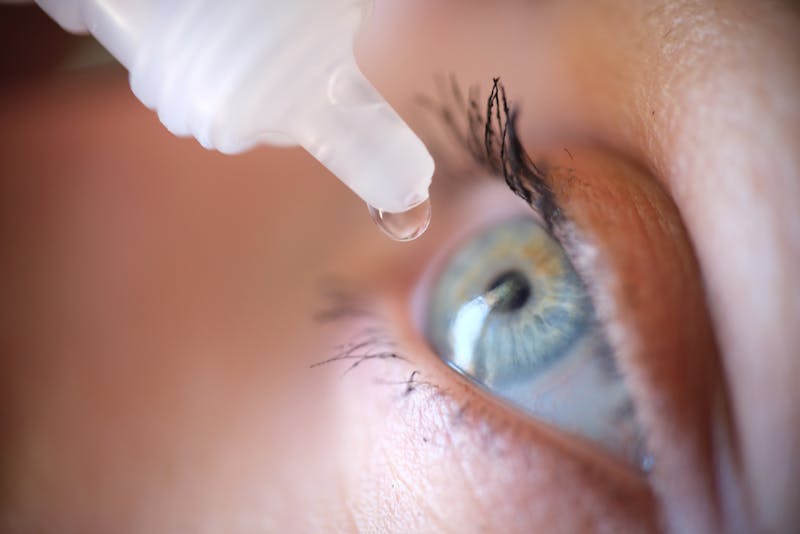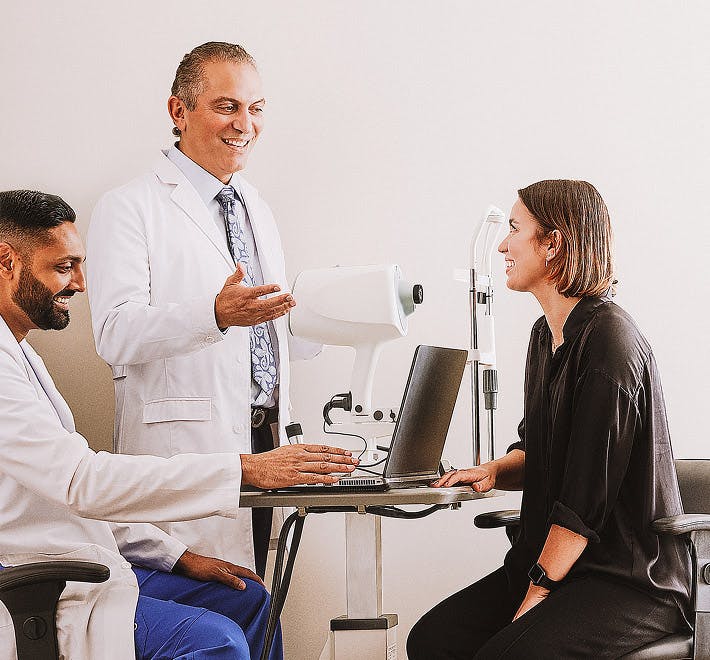Enhancing Your Vision
Guiding you toward the procedure that fits your unique needs, so you can see the world clearly and confidently.

Many people think cataract surgery is over once the cloudy lens is removed. But the truth is, what happens after surgery often determines how clearly you’ll see for the rest of your life. Surprisingly, it can all go wrong because of one small bottle, the anti-inflammatory eye drop that protects your retina.
If you’ve had cataract surgery in New York City, or you’re planning to, this is a detail you cannot afford to miss. Even a quiet substitution at the pharmacy can mean the difference between a smooth recovery and months of blurred or distorted vision.
After cataract surgery, your eye starts the healing process. The key goal during this period is to control inflammation and prevent swelling in the center of your retina, called the macula. When swelling occurs, it’s known as Cystoid Macular Edema (CME), a common but preventable cause of delayed vision recovery.
CME can make your central vision hazy, dull your colors, and make fine details hard to see. Luckily, it’s almost completely preventable with the correct medication. At Cohen Eye Institute, we emphasize that post-operative care is just as important as the surgery itself.
After surgery, every patient is prescribed two essential drops:
It’s the second one, the NSAID, where most mistakes happen. There are several NSAIDs available, including Ketorolac, Nepafenac, Diclofenac, and Bromfenac. While they sound similar, their ability to reach and protect the retina varies significantly.
Among NSAID drops, Bromfenac stands out as the most effective for preventing CME after surgery. Here’s why:
Clinical studies back this up:
At Cohen Eye Institute in Manhattan and Queens, patients using Bromfenac correctly almost never develop CME. Nearly every case of macular swelling we see comes from one preventable issue, the wrong drop.
So why isn’t every cataract patient automatically given Bromfenac? Many pharmacies quietly substitute it with another NSAID—usually Ketorolac, Nepafenac, or Diclofenac—without consulting the surgeon or informing the patient. This can happen due to:
While these changes may seem harmless, they can seriously affect your results. These “equivalent” drugs are not equal, especially in preventing retinal swelling. When Bromfenac is replaced, the risk of macular edema rises sharply, and patients often don’t even know it was switched.
Not all doctors are aware of Bromfenac’s superior ability to protect the retina. Many assume all NSAIDs work the same. But real-world results tell a different story. At Cohen Eye Institute, we’ve seen thousands of cases where using Bromfenac from the start led to faster healing, clearer vision, and no macular swelling. That’s why we recommend it for nearly every cataract surgery patient in NYC—especially those receiving premium or multifocal lens implants.
Living in New York City means your eyes face unique challenges—long hours on screens, intense lighting, and constant visual demand. Choosing an experienced cataract surgeon in NYC ensures not only precise surgery but also expert guidance during recovery. At Cohen Eye Institute, with locations in Manhattan, Queens, and New Jersey, we combine advanced laser technology with personalized care before, during, and after your procedure.
Cataract surgery is one of the safest and most successful operations, but even the best surgery can be undermined by the wrong post-op drop. At Cohen Eye Institute, we make sure every patient understands the critical role of Bromfenac in preventing macular swelling and preserving long-term vision. If you’ve had or are planning cataract surgery in NYC, check your bottle—make sure it says Bromfenac, and don’t settle for substitutes. Sometimes, the difference between clear and cloudy vision comes down to one small word on the label.
Guiding you toward the procedure that fits your unique needs, so you can see the world clearly and confidently.




If you do not see your preferred date and time please call the office, so we can accommodate your request (917) 398-4011.